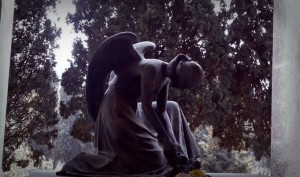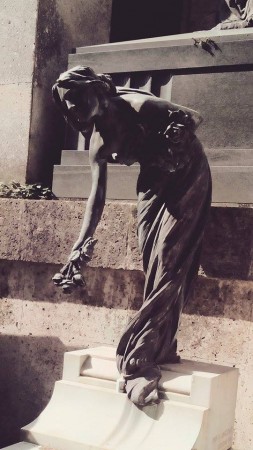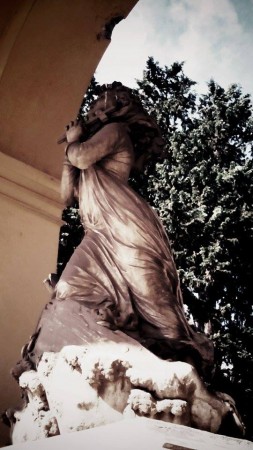The cemeterial statues, due to their beauty and the meaning who accompanies them, have the specific purpose of paying tribute to the memory of one who is no longer among us: the funeral art allows to create true masterpieces designed to commemorate the memory of our loved ones.
The artwork becomes in fact a place of memory where remember the dead, where to ask a prayer and a place of reflection.
Arisen following the Napoleonic laws on burials, many Italian monumental cemeteries are real stone cities, rich in works of art commissioned by the increasingly rich and powerful bourgeoisie.
These pictures have been made in various Italian cemeteries such as the Staglieno monumental cemetery of Genova,The Verano monumental cemetery of Rome and more little cemeteries in the south of Italy.
The Staglieno monumental cemetery is the largest burial site of Genova, in the north of Italy, and is one of the most important monumental cemeteries in Europe.
There are buried illustrious sons of Genoa and other famous people including Constance Lloyd, Oscar Wilde’s wife.
The vastness of its imposing tombs is considered a real open-air museum. The numerous statues and funerary chapels – works mainly sculptors – albeit built in different styles, return to the whole complex an important value in the aspect of architecture and funerary sculpture.
The Verano monumental cemetery is the main cemetery of Rome. Its construction was decided as a result of the Edict of Saint-Cloud (1804), which required the graves outside the city walls, but its implementation was entrusted, between 1852 and 1871, architect Virginio Vespignani.
Since its construction in 1980 virtually all Romans were buried in this cemetery, with the exception of the popes, cardinals and real.
The Verano Monumental Cemetery is not only a large open-air museum, but also a set of memories of an entire community.
The stories of individual men and women buried there recompose the events experienced by our country from the Risorgimento to the twentieth century: the social and cultural transformations, the development of literary styles, art and architecture, the birth and transformations of cinema with key players .
The cemetery is the burial place for at least twenty centuries, as evidenced by the existence of a Roman necropolis: the catacombs of Santa Ciriaca.
Currently the Verano Cemetery, with its rich heritage of art, is a veritable museum of estimabile value from a historical, artistic and cultural life of up to half of the twentieth century.
Most of the cemeteries in Italy are the mirror of the curious taste and customs of an era and they preserve the works of the greatest sculptors at the turn of the nineteenth and twentieth century.














